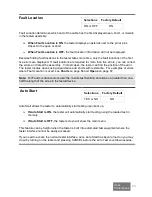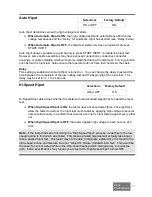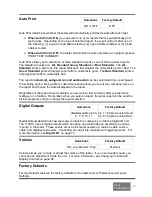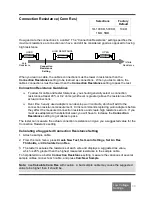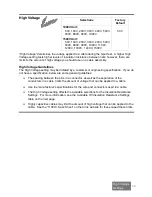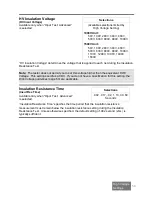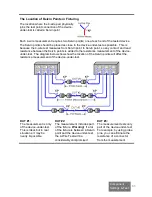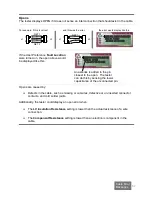
52
High Voltage
Settings
HV Insulation Resistance Guidelines
Specifications may dictate the Insulation Resistance setting, which may be based on
some of the following factors:
Allowed Contamination
Cables in high voltage and sensitive electronic equipment must have a stringent test
because of their ultimate use. Other cables may be tested at lower levels to allow for
contamination, such as fingerprints and mold release.
Cable Length
Long cables may need a lower
Insulation Resistance
setting to accommodate the
cumulative effect of small current leakages along their length.
Humidity
A humid environment can aggravate the effects of contamination between cable
contacts and affect cable insulation. For more information, see
Duration
Selections
Factory
Default
VDC
.01, .1, 1, 2, 5, 10, 30,
60, 120 seconds
VAC
1, 10, 60, 300, 3600, or
7200 cycles
.01 seconds
1 cycle
“Duration”
determines the amount of time the high voltage is applied to each net during the
Dielectric Withstand Test, which occurs during the hipot test. If using an AC test voltage for the
Dielectric Withstand Test, the duration (typically referred to as
“dwell”) is set in cycles rather
than seconds. If you do not have a Duration Specification, use the following guidelines:
Changing Duration Guidelines
The default setting for this parameter of 0.010 seconds (10 milliseconds) should be
adequate to test most cables. A longer Duration will increase the total hipot test time.
A shorter Duration
without any Soak Time is more likely to fail due to humidity related
problems since absorbed moisture may not have time to be “dried out” of the cable
before the Insulation Resistance Test.
A longer Duration
provides a more stringent test for predicting dielectric failures
(exhibited as sudden arcs); however, equivalent dielectric errors can be found by
compensating a shorter Duration with a higher High Voltage setting.
A longer Duration may be better for predicting some types of insulation failures and may
increase the chance for detecting a breakdown condition.



